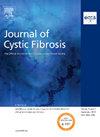Trends in Medicare versus Medicaid spending on CFTR modulator therapy – an economic evaluation
IF 6
2区 医学
Q1 RESPIRATORY SYSTEM
引用次数: 0
Abstract
The introduction of cystic fibrosis transmembrane conductance regulator (CFTR) modulators has changed the landscape of therapy for persons with cystic fibrosis. However, the steep cost of targeted therapy poses significant financial burden for individuals and health systems. We aimed to determine the trends in Medicare and Medicaid spending on CFTR modulators between the years 2015 and 2022 through retrospective analysis of the Medicare and Medicaid claims data. The outcome measures included total dosage units prescribed, number of claims, spending per claim, and total spending on CFTR modulators for Medicare and Medicaid between 2015 to 2022. Average annual percentage changes (AAPC) were calculated for all outcome measures. Our results show that from 2015 to 2022, Medicaid consistently had higher total dosage units prescribed, number of claims, spending per claim, and overall spending on CFTR modulators compared to Medicare. Total spending for both Medicaid [AAPC 38.9, 95 % confidence interval [CI] 27.2–51.6, p < 0.01] and Medicare [AAPC 39.2, 95 % CI 30.2–55.1, p < 0.01] increased significantly during this period. Increases in CFTR spending was accelerated beginning in 2019, when the triple combination CFTR modulator therapy, elexacaftor/tezacaftor/ivacaftor, was introduced to the US market. This increase has been accompanied by a reduction in spending and use of other CFTR agents. This study evaluated the increases in spending for CFTR modulators over the years and the main drivers behind them, which may help inform future negotiations between healthcare systems and pharmaceutical companies, as well as policy makers and stakeholders.
联邦医疗保险与医疗补助在CFTR调节治疗上的支出趋势——一项经济评估。
囊性纤维化跨膜传导调节剂(CFTR)的引入改变了囊性纤维化患者的治疗前景。然而,靶向治疗的高昂费用给个人和卫生系统带来了巨大的经济负担。我们旨在通过对医疗保险和医疗补助索赔数据的回顾性分析,确定2015年至2022年间医疗保险和医疗补助在CFTR调节剂上的支出趋势。结果指标包括2015年至2022年期间规定的总剂量单位、索赔数量、每次索赔支出以及医疗保险和医疗补助的CFTR调节剂总支出。计算所有结果测量的平均年百分比变化(AAPC)。我们的研究结果显示,从2015年到2022年,与医疗保险相比,医疗补助计划的总处方剂量单位、索赔数量、每次索赔支出和CFTR调节剂的总体支出始终高于医疗保险。在此期间,医疗补助[AAPC 38.9, 95%可信区间[CI] 27.2-51.6, p < 0.01]和医疗保险[AAPC 39.2, 95% CI 30.2-55.1, p < 0.01]的总支出均显著增加。CFTR支出的增长从2019年开始加速,当时三重组合CFTR调节疗法,elexaftor /tezacaftor/ivacaftor被引入美国市场。伴随这一增长而来的是支出和使用其他CFTR制剂的减少。本研究评估了多年来CFTR调节剂支出的增长及其背后的主要驱动因素,这可能有助于为医疗保健系统和制药公司以及政策制定者和利益相关者之间的未来谈判提供信息。
本文章由计算机程序翻译,如有差异,请以英文原文为准。
求助全文
约1分钟内获得全文
求助全文
来源期刊

Journal of Cystic Fibrosis
医学-呼吸系统
CiteScore
10.10
自引率
13.50%
发文量
1361
审稿时长
50 days
期刊介绍:
The Journal of Cystic Fibrosis is the official journal of the European Cystic Fibrosis Society. The journal is devoted to promoting the research and treatment of cystic fibrosis. To this end the journal publishes original scientific articles, editorials, case reports, short communications and other information relevant to cystic fibrosis. The journal also publishes news and articles concerning the activities and policies of the ECFS as well as those of other societies related the ECFS.
 求助内容:
求助内容: 应助结果提醒方式:
应助结果提醒方式:


